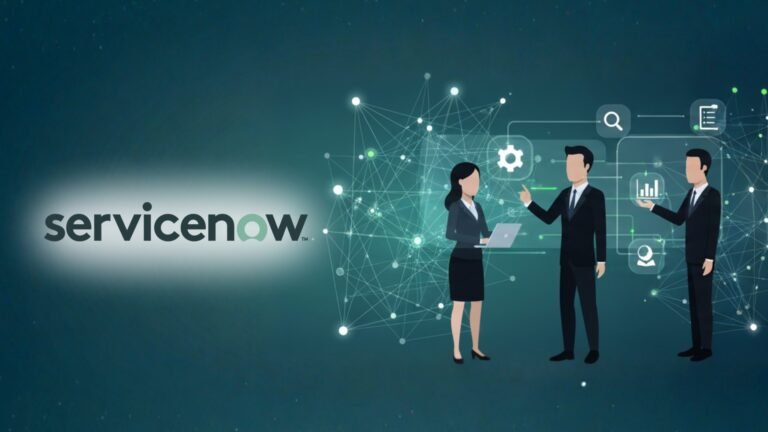IT Asset Management (ITAM): Definition, Tool & Solutions
Take command of your infrastructure with DevTools IT Asset Management — monitor assets in real time, boost efficiency, and ensure data accuracy. Connect with our experts to learn more!
14 +
Years of Experience
550 +
Happy Customers
250 +
Years of Tech Leadership Exp.

"License Reseller" and "Consulting & Implementation" Partner

TL;DR
- IT Asset Management (ITAM) tracks and manages hardware, software, and digital assets throughout their lifecycle—from procurement to disposal—for optimal value and control.
- ITAM software centralizes asset data, automates monitoring, and ensures compliance while reducing costs and improving visibility across on-premise and cloud environments.
- Key features include lifecycle oversight, asset tracking, inventory and contract management, SaaS visibility, and integration with CMDB for complete governance.
- Implementing ITAM improves ROI, enhances productivity, ensures compliance, and supports informed decision-making aligned with ISO 19770 standards.
What is an IT Asset?
An IT asset refers to any hardware, software, or information that holds value for organizations. Examples include laptops, desktops, office mobile phones, system databases, office software, and application licenses. Managing the lifecycle of these assets is vital as their value decreases over time. Hence, effective IT asset management is crucial to optimize their lifespan and ensure they meet the requirements of the business.
What are IT Asset Management Software?
IT Asset Management Software takes a proactive approach in overseeing and controlling IT assets within a network. These software solutions meticulously monitor the lifecycle of assets within an organization.
They offer centralized management for both LAN and remote endpoints, allowing active oversight of hardware and software assets across the network, accessible from laptops or mobile devices.
ITAM software not only monitors digital assets but also mirrors the tracking of physical assets. Through asset scans, it facilitates the configuration of alerts that promptly signal any alterations detected within the hardware or software inventory.
What is IT Asset Tracking?
It involves overseeing an IT device’s complete journey, starting from its setup to its eventual disposal. This thorough tracking guarantees the optimal use of assets and their timely replacement or retirement. Through vigilant monitoring of where assets are, their condition, and how they’re utilized, businesses can cut down on operational expenses.
This proactive method prevents needless spending, losses, thefts, and asset depreciation, resulting in cost savings. Additionally, streamlined IT asset tracking improves resource distribution and how efficiently assets are used.
Why IT Asset Management is Important?
IT Asset Management (ITAM) holds crucial importance for businesses for several reasons:
- Centralized Information: ITAM provides a single, reliable source for all asset data, preventing inaccuracies and manual tracking efforts. This streamlined system enables efficient resource allocation and addresses IT issues promptly.
- Resource Optimization: Real-time control over assets minimizes waste, improves utilization, cuts down unnecessary expenses, and enhances security and compliance, thereby reducing risks.
- Enhanced Productivity: In the era of digital transformation, ITAM plays a vital role in enabling seamless service delivery while reducing expenses, ultimately boosting productivity.
- Cross-Team Support: By centralizing asset data and sharing insights across teams, ITAM becomes a competitive advantage. It swiftly delivers valuable insights and manages problems effectively.
At DevTools, we bring in expertise to help your teams streamline the ITSM Implementation along with associated processes and teams. The ITAM brings visibility to your organization/team’s assets and resources, which, in a simple manner, keeps track of your valuable items.
We have Jira Service Management experts who will help you fast-track the adoption. Help your team’s productivity and efficiency grow with visibility with the right set of tools along with proper implementation.
Types of IT Asset Management
IT Asset Management encompasses different categories:
- Hardware Management: Our system efficiently tracks physical devices like computers, printers, etc., allowing categorization based on various criteria and alerts for new hardware.
- Software Management: It oversees installed applications, licenses, metering, and the ability to restrict certain software.
- Digital Asset Management: Handling documents, media, and enterprise-managed data.
- Cloud Asset Management: Tools for actively managing cloud services from major providers like Amazon, Microsoft, and Google.
- Fixed Asset Management: Tracking fixed IT assets like desks, printers, etc., using methods like barcodes and RFID tags.
What are the Stages of an IT Asset Lifecycle?
Strategizing
In this initial phase, organizations devise a plan to identify required IT assets, their procurement methods, and the necessary funding. Typically, a cost-benefit assessment is conducted during this stage.
Procurement
Organizations actively obtain assets during this phase through various means such as construction, purchase, leasing, or licensing.
Integration
Organizations introduce newly acquired assets into their IT framework in this stage. Tasks include installation, integration with other systems, establishment of operational procedures, and facilitating user accessibility.
Sustainment
Organizations proactively engage in maintenance, repairs, upgrades, and enhancements of assets while they are in use. The aim is to optimize user value, prolong asset life, mitigate risks, and curtail support expenses.
Disposition
When an asset reaches the end of its lifecycle, organizations actively manage its disposal. Asset disposition involves transitioning users to alternate resources, updating asset records, terminating support agreements, and initiating plans for replacement assets.
Benefits of IT Asset Management
The advantages of IT Asset Management (ITAM) lie in its ability to offer comprehensive insights into an organization’s IT resources. ITAM empowers IT leaders to demonstrate the return on investment (ROI) from these assets, showcasing how they directly contribute to the company’s business objectives.
A successful ITAM strategy acts as a bridge between technological needs and business goals, ensuring alignment across the organization. The benefits of employing ITAM tools encompass the following:
- Creating a centralized repository for all IT asset information
- Providing enhanced visibility into asset locations and comprehensive details
- Mitigating potential risks
- Ensuring organized management and reporting across diverse asset categories
- Avoiding unnecessary expenses linked to duplicate asset purchases
Establishing an effective ITAM strategy demands a comprehensive inventory covering various IT assets, such as data centers, software, hardware, mobile and cloud resources, networks, employee workstations, and other business technologies.
The primary objectives of ITAM include cost savings through precise asset tracking, better control over the IT environment, improved organization in managing the IT lifecycle, and reducing waste by managing asset disposal efficiently.
The International Association of Information Technology Asset Managers (IAITAM) highlights that implementing best practices in ITAM can lead to long-term benefits. These include cost reductions, improved software compliance, stronger IT security, better customer service, increased control over IT assets, streamlined inter-departmental communication, reduced governance risks, enhanced support for security and disaster recovery management, and more informed budgeting and strategic decision-making.
Key Features of IT Asset Management Tools

Lifecycle Oversight:
Utilize ITAM software to automatically detect and monitor hardware and software assets used within your organization. By actively managing asset acquisition and expenses, you can optimize their lifecycle through an integrated and automated solution that oversees their journey from procurement to retirement.
Tracking Assets:
Utilize centralized data to comprehensively monitor and trace all organizational assets. This involves actively collecting and maintaining information related to asset expenses, licenses, warranties, locations, and conditions.
Managing Inventory:
Leverage ITAM software to oversee and track both on-premise and cloud assets effectively. This empowers informed decision-making regarding asset procurement, utilization, and governance.
Contract Oversight:
Make use of ITAM software to actively handle contracts and licenses, ensuring efficient planning for future renewals and optimizing SaaS license utilization. Proactively monitor usage and intelligently renew contracts to cut software costs, prepare for audits, reduce paperwork, and enhance compliance.
Software Control:
Implement an ITAM software solution to optimize software usage and automate processes for on-premise software and SaaS applications. By centralizing software management, you can efficiently monitor software expenses and enable informed business planning. Additionally, suitable ITAM software can prevent unauthorized software usage and deploy patches to address security and compliance risks.
SaaS Visibility:
Gain comprehensive insight into your SaaS landscape, identify redundant and underused applications, extract actionable insights, and automate optimization processes. Create a reliable reference point to prevent isolated SaaS subscriptions and ensure accurate usage insights for timely renewals.
Configuration Management Database (CMDB):
Utilize suitable ITAM software to access a CMDB, serving as a comprehensive source of truth for your assets and their entire lifecycle. Leverage this database to improve service delivery and enhance asset governance. With a real-time infrastructure view, effectively manage assets, mitigate risks, and understand asset dependencies and connections in one dashboard.
ISO Standards for IT Asset Management
The ISO 19770 family of standards, established by the International Standards Organization (ISO), serves as a comprehensive framework for IT Asset Management (ITAM). Updated in 2017, this collection consists of five main components, each outlining key principles and practices essential for effective ITAM. Let’s explore these five parts and their specific focuses.
ISO/IEC 19770-1: Establish an ITAM Process Framework
This standard offers guidelines for effective IT Asset Management (ITAM) implementation in organizations. It presents a systematic approach to showcase ITAM compliance with industry standards, meet corporate governance needs, and align with IT service management activities.
ISO/IEC 19770-2: Implement a Software Identification Tag (SWID) Data Standard
This standard defines a data format for software identification tags (SWIDs), allowing organizations to accurately identify software installed on any device.
ISO/IEC 19770-3: Adopt an Entitlement Data Standard
This standard establishes a set of guidelines for specifying the permissions and privileges linked to software, outlining the approach for assessing the utilization of licenses or entitlements.
ISO/IEC 19770-4: Establish a Resource Utilization Measurement Standard
This standard defines measurement criteria for standardized reporting of resource utilization, essential for managing complex data centre licenses and cloud-based software and hardware.
ISO/IEC 19770-5: Compile a Comprehensive Overview of ISO-Defined ITAM Standards and Vocabulary
This standard offers a thorough summary of ISO-defined IT Asset Management (ITAM) standards and related terminology. It provides a consolidated understanding of the key concepts and vocabulary within the ITAM domain.
Best Practices for IT Asset Management
Effectively implementing IT Asset Management (ITAM) involves thorough planning and consideration of key factors, including:
- Choosing the right asset management tool: Evaluating your current needs and select the tool that effectively meets them.
- Implementing standards for asset tracking and documentation: Develop explicit procedures for tracking assets, recording them in the system, and utilizing the system efficiently.
- Establish a uniform method for tracking assets: Develop a standardized approach to track and manage assets systematically, ensuring comprehensive accountability and effective management.
- Perform routine asset management audits: Plan regular audits to assess and revise current asset records, guaranteeing accuracy and comprehensiveness.
- Keep vital asset information up-to-date: Monitor important details like expiration dates, purchase records, vendor contacts, and other pertinent information.
Best IT Asset Management Tool
Jira Service Management: IT asset management (ITAM) involves overseeing the entire lifecycle of an organization’s assets, including their proper accounting, deployment, maintenance, upgrades, and eventual disposal. Jira Service Management’s built-in tool for asset and configuration management, called Assets, enables teams to easily track various types of assets and configuration items (CIs) in a flexible and dynamic way. Assets also allow for the smooth linking of assets to service requests, incidents, problems, changes, and workloads.
In Jira Service Management Premium, Enterprise, and Data Centre plans, the Assets feature allows you to create a strong repository for assets or a configuration management database (CMDB) within the Jira Service Management ecosystem.
FAQs
ITAM (IT Asset Management) focuses on tracking and managing an organization’s IT assets throughout their lifecycle, optimizing resource usage. On the other hand, ITSM (IT Service Management) is concerned with delivering and supporting IT services to meet business needs. While ITAM deals with asset optimization, ITSM emphasizes service delivery and support.
Implementing an IT Asset Management (ITAM) solution in an organization is crucial for efficient resource utilization, cost optimization, and compliance with licensing agreements. It helps track and manage IT assets throughout their lifecycle, ensuring better control, risk mitigation, and streamlined decision-making for enhanced overall IT governance.
The three main deliverables of IT Asset Management are efficient tracking and inventory management of IT assets, ensuring compliance with licensing and regulatory requirements, and optimizing resource utilization to enhance overall cost-effectiveness.
An IT asset inventory should include comprehensive details about hardware, software, and network components. This encompasses information such as device specifications, software licenses, and network configurations. Additionally, tracking purchase dates, warranties, and current locations is crucial for effective asset management.
ITIL (Information Technology Infrastructure Library) is a framework for IT service management, providing best practices for aligning IT services with business needs. ITAM (IT Asset Management) involves the tracking and optimization of an organization’s IT assets throughout their lifecycle, ensuring efficient and cost-effective use of resources.
The role of an IT asset manager involves overseeing and optimizing an organization’s IT assets throughout their lifecycle. This includes procurement, tracking, maintenance, and disposal to ensure efficient resource utilization and compliance. IT asset managers play a crucial role in cost management, risk mitigation, and maintaining an accurate inventory of technology resources.

Pramodh Kumar M is a Solutions Architect at DevTools with over 6 years of specialized experience in DevSecOps and enterprise IT solutions. He holds multiple advanced certifications, including Certified Kubernetes Security Specialist (CKS), GitHub Advanced Security, and Azure Solutions Architect Expert. Pramodh specializes in Agile, Cloud & DevOps toolchain implementations, with extensive hands-on experience helping enterprises with digital transformation initiatives. His expertise extends to ServiceNow implementation and support. He is passionate about sharing practical insights on Cloud, DevOps, Automation, and modern IT operations.




